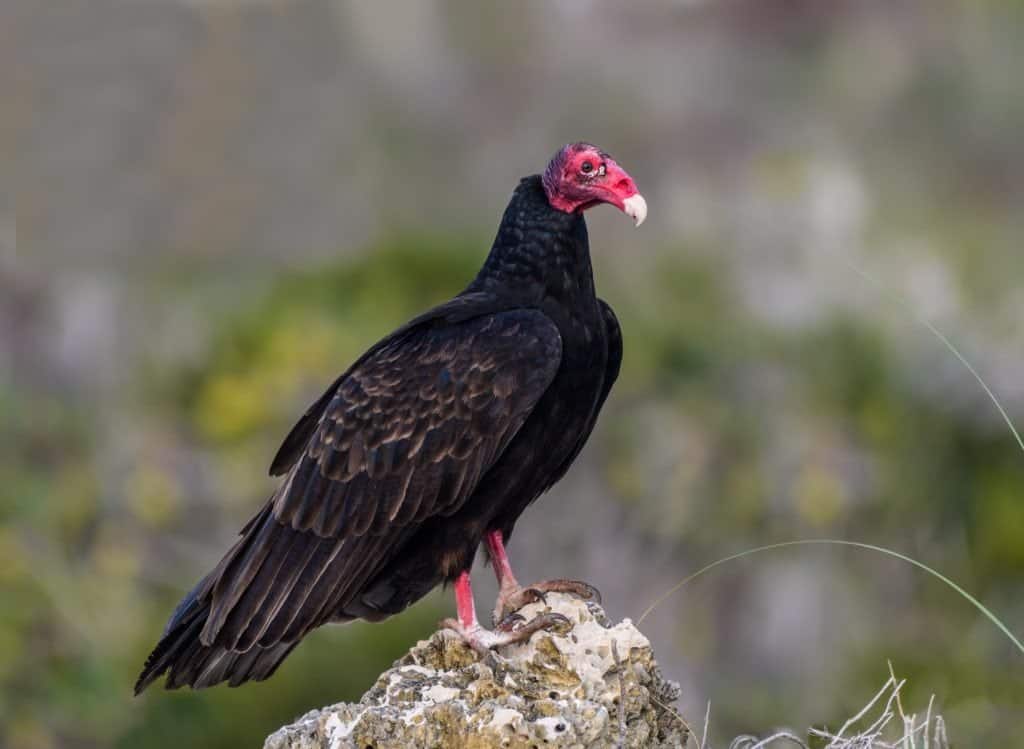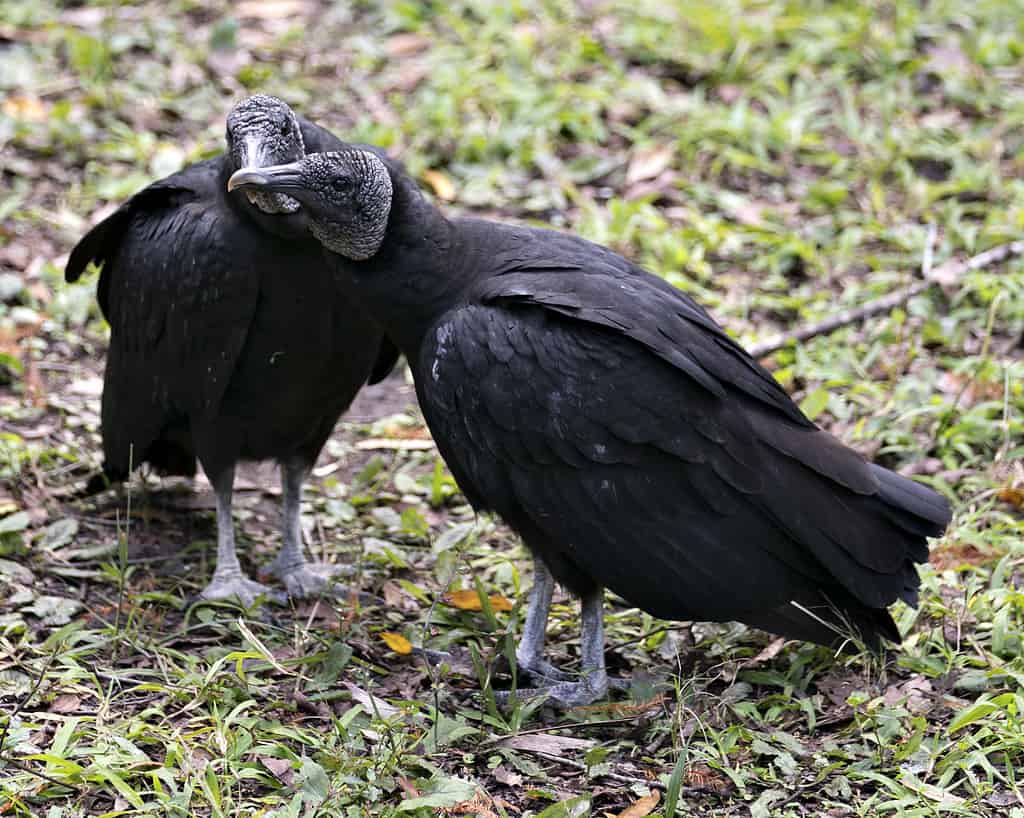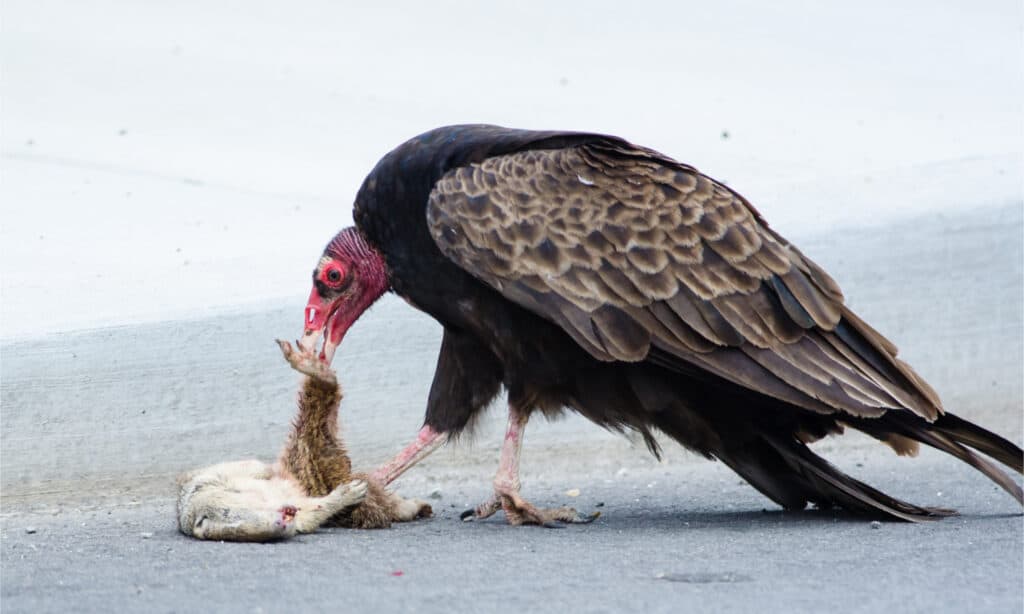Have you ever been on a highway and seen a large bird soaring above you? Chances are, you’ve just seen a vulture. Known for their bald heads and interesting diets, vultures are an easily identifiable species of bird. However, many people don’t realize that there are several different types of vultures. Continue reading below to learn about the types of vultures in North Carolina.
The 2 Types of Vultures in North Carolina
There are two types of vultures in North Carolina: the turkey vulture and the black vulture. Keep reading below to learn more about these two species, including how to identify them!
1. Turkey Vulture (Cathartes aura)
The turkey vulture is native to and widespread throughout North America. They have a diet that consists exclusively of carcasses, although the exact animal may vary. This species is also known as the turkey buzzard. They can be found year-round throughout the state.
Turkey vultures are a rather large raptor species. They can weigh up to five pounds and grow to be as long as 2.5 feet. What is most impressive about their size, however, is their wingspan, which ranges from 63 to 72 inches from wingtip to wingtip. They are best identified by their dark plumage and bald, red-pink head.
While in flight, turkey vultures keep their wings outstretched as they fly, forming a subtle “V” shape. Although their plumage is dark from above, while in flight, they sport notable white markings on the underside of their feathers. Oftentimes, this, paired with their wobbly soaring, is one of the best ways to identify a turkey vulture above you. Turkey vultures, along with black vultures, have what are known as passive soaring wings. This means that they often drift along the air, riding thermals when possible, and do not flap often.

Turkey vultures are named for their turkey-like appearance.
©FotoRequest/Shutterstock.com
2. Black Vulture (Coragyps atratus)
The black vulture is the second of the two types of vultures in North Carolina. It is smaller than its turkey vulture counterpart, with a wingspan averaging around 59 inches. They sport a black plumage, and, rather than the red of the turkey vulture, the black vulture’s legs and featherless head are a dark grey or black color.
This species is found in both North America as well as South America, though they are much more widespread throughout the latter. In fact, in North America, the black vulture can only be found throughout the southernmost region and southeast region of the United States, Mexico, and Central America. In South America, however, they are present in nearly every country, and they are abundant in the northern region of the continent.
It has less efficient flight than some other species of vulture due to its shorter wings. Because of this, although it too is a passive soarer, the black vulture will need to flap more often during flight than the turkey vulture.

Black vultures are less common throughout North America but can be found year-round in North Carolina.
©iStock.com/Rejean Bedard
Why Are Vultures Important?
Oftentimes, when talking about important species, vultures are overlooked. However, these raptors are essential to the ecosystems where they live.
As scavengers, vultures feed on carrion or dead animals. By doing so, they’re helping to eliminate disease and pathogens from the ecosystem. Vultures have specialized stomach acid that allows them to eat decaying meat without taking harm from any bacteria present. Their bodies are also designed in such a way as to prevent the spread of disease, which is why they have bald heads and legs.

Vultures help remove carcasses and diseases from the ecosystem.
©hubert999/Shutterstock.com
How Can You Help Vultures?
Neither of the two types of vultures in North Carolina are endangered. However, there are species in the world that are. And, even if the black vulture and turkey vulture are species of least concern, their conservation is still an important part of a healthy ecosystem.
Because of this, you may be wondering how you can help protect vultures. One of the best ways to help protect vulture populations is to switch to non-lead ammunition when hunting. When a bullet is fired into an animal, it splinters, which means it can send hundreds of small fragments of lead throughout the body. Because of this, any of the viscera left behind after cleaning may contain lead. When vultures work to clean up the carrion that has lead in it, they often ingest the fragments. This can cause lead poisoning in the bird, which is currently a leading cause for concern.
You can also help by avoiding littering, especially near busy roads. When you litter, even biodegradable waste, such as apple cores or banana peels, it can attract animals to the road. Sometimes, these animals are hit and killed by cars. Vultures are then attracted to the carrion, where they then also become at risk for vehicle collisions.

Small changes can help protect vulture populations for years to come.
©James W. Thompson/Shutterstock.com
Thank you for reading! Have some feedback for us? Contact the AZ Animals editorial team.








